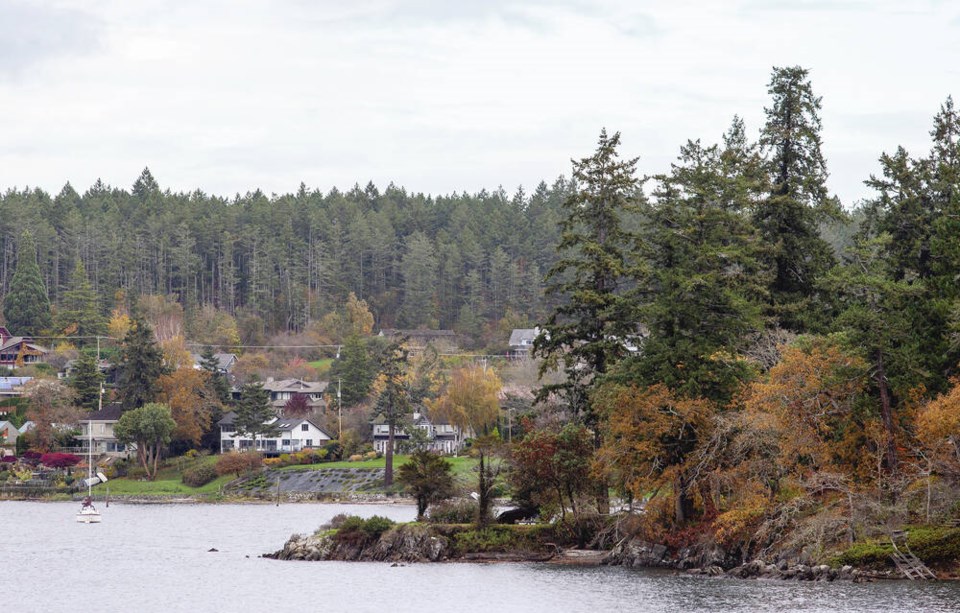A commentary by a former mayor of North Saanich.
The provincial housing legislation introduced in November overrides local government land planning autonomy throughout British Columbia. The expressed intention of the province is to promote construction of multiple housing units on land presently zoned as single family residential.
The stated need is for much more housing to respond to a housing crisis, not clearly defined. The province has estimated the number of units it seeks overall, apportioning these units to specified municipalities.
The continuing barrier facing those in lower-income brackets and many first-time home buyers is housing affordability. However, additional new provincial legislation removes present abilities for local governments to fund affordable housing, the overwhelming crisis for years.
This legislation represents the most extensive financial download by the province upon local governments yet seen in B.C.
The needs for increased infrastructure result from higher densities; these include water, hydro, sewage disposal, schools, transportation, hospitals and medical personnel.
Yet no provincial funding is offered to offset the municipal burden. That burden will rest completely on the existing municipal taxpayer, showing itself in continuing property tax increases.
Vancouver Island is heavily over-represented among the municipalities chosen by the province for increased housing. Seventeen of the 47 designated are on the Island, fully one-third of the total. The land mass of the Island is about three per cent of the land area of B.C. As an island, its resources are finite.
The new legislation does not consider the extensive variation of capacity in designated municipalities, simply ignoring any inconvenient drawbacks. However, some capacity and supply issues cannot be ignored.
The perilous state of water supply on Vancouver Island is a glaring example, as seen in the Capital Regional District and throughout the Island.
Prior to this provincial intervention, the CRD board had approved a $2 billion plan for the region’s future water supply, transmission, and projected water demands.
All the recommendations in the plan are based on diminished drought conditions and returns to “average winter precipitation.”
A greater water supply by 2037 will be achieved by accessing the deep water area in the Sooke Reservoir, at a cost of $135 million. Since this deeper water requires more purification, a new filtration plant will be built at a cost of $1 billion.
The plan did not anticipate the unexpected growth now demanded by the province.
Vancouver Island has just experienced three consecutive years of the highest level five drought, this year the worst. The whole Island is more prone to drought than the rest of the province, with no reasonable basis to expect more precipitation in future years.
Prolonged years of drought could double the amount of needed irrigation water for farmers across the Island. This past year some farmers began irrigating in March continuing to October.
After more than 12 years of deliberation, public consultation, and mediation, the CRD board drafted a new regional growth strategy, adopted by all 13 municipalities in March 2018.
The careful land planning for the strategy addressed multiple regional matters: water needs, food production, acquiring and protecting agricultural land, an agricultural strategy, protection of rural communities, transportation.
Food security is overwhelmingly important to regional residents. Efforts toward improving agricultural production continue but the most critical need is agricultural water supply at affordable rates.
In the event of a crisis, the estimated food supply on Vancouver Island is 72 hours. Believing that we can continue to subsist on imported food will not make it so. A wise municipal councillor, who was also a farmer, said “We can’t eat houses.”
Extensive residential construction is already underway and approved in the capital region, little of which addresses affordability. A Times Colonist real estate report, in November 2023, noted 2,756 listings available on the market.
Clearly higher taxes will accrue to current homeowners, for extensive new infrastructure and its maintenance. The affordability crisis continues.
The only obvious benefit of the new legislation may be to developers.



